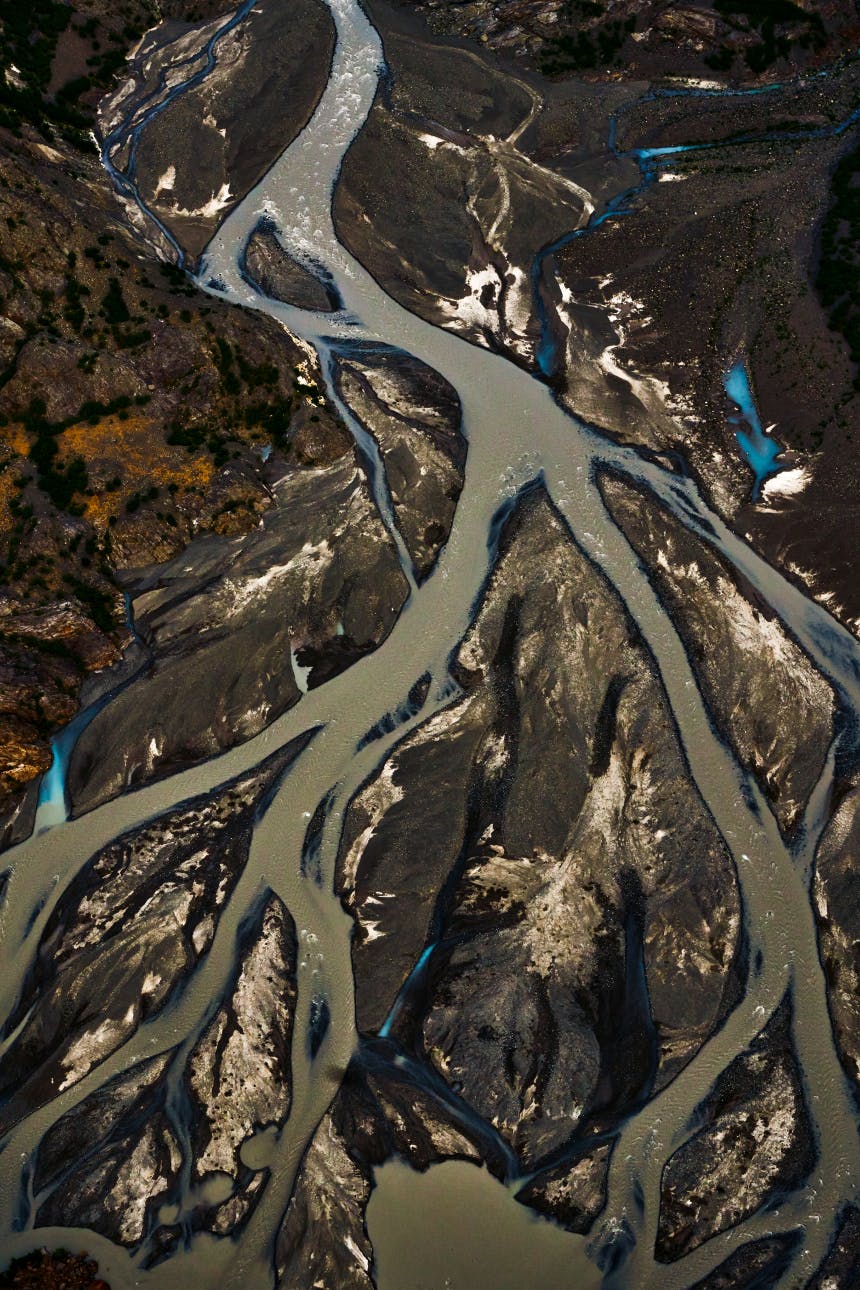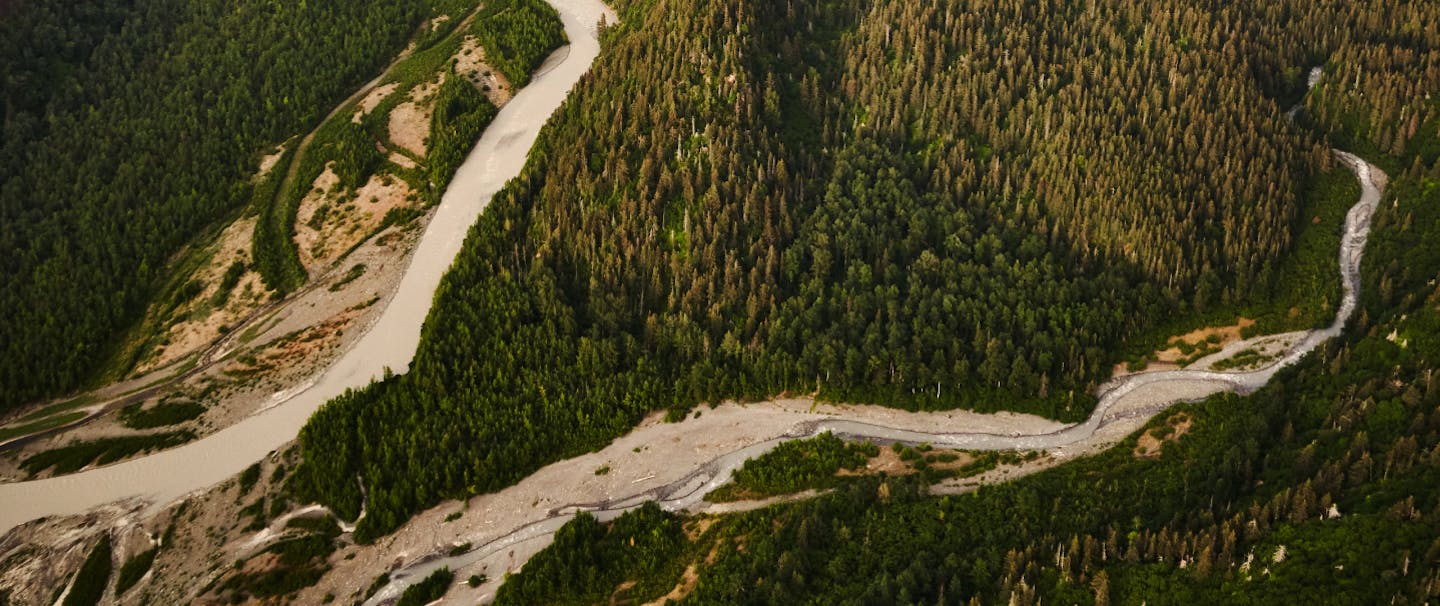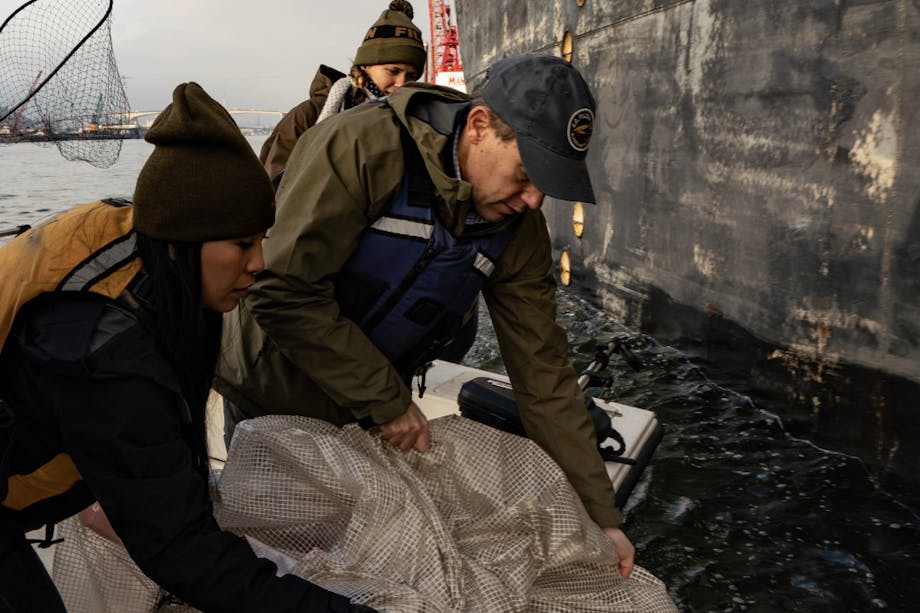Life needs rivers. From the water filling your glass to the trout leaping in your favorite stream, rivers sustain us, and the natural world. They are vital to the health and well-being of our communities.
That’s why, every year, American Rivers releases a report spotlighting ten rivers facing urgent threats – and the solutions that we, the public, can advance to ensure a better future. Here, with an excerpt from this year’s dispatch, is Amy Souers Kober, VP at American Rivers.

Mt. Rainier and the Puyallup River, 1906.
Coming in at number four on this year’s America’s Most Endangered Rivers® list is Washington’s Puyallup.
The Puyallup River and its largest tributaries, the White and Carbon rivers, have their origins in the glaciers of Mount Rainier. The Puyallup, the third largest tributary to Puget Sound, flows roughly 65 miles through Mount Rainier National Park, wilderness and other forested lands, and Pierce and King counties on its way to Commencement Bay in Puget Sound. The river provides critical resources for the Puyallup Tribe of Indians, the Muckleshoot Indian Tribe and other local communities.
The river and its estuary support several species of native fish and are home to the only spring Chinook salmon population in the South Puget Sound region. The river’s Chinook are vital to the survival of endangered Southern Resident Killer Whales. The Chinook salmon, steelhead and bull trout native to the Puyallup are listed as threatened with extinction under the Endangered Species Act.
The big threat to the Puyallup and its fish and wildlife? The Electron Hydropower Project.
This is a dam that predates the Federal Power Act, so it does not have a hydropower license from the Federal Energy Regulatory Commission. The facility has an insufficient fish passage and is not compliant with the Endangered Species Act. The dam restricts adult salmon from accessing their spawning habitat upriver. Also, the Electron Project is not properly screened to prevent juvenile salmon from entering the flume and turbines. This causes juvenile salmon to be drawn into a holding pond, where they drop 873 vertical feet into the powerhouse and turbines and die. The Electron facility is estimated to kill 40 percent of Chinook juveniles on their way to Puget Sound.

OVERVIEW OF POWERHOUSE AND PENSTOCKS, LOOKING SOUTH, Print No. 368, 1904 - Electron Hydroelectric Project, Along Puyallup River, Electron, Pierce County, WA.
“As we plan for our future in the Northwest and nationwide, we need to fix problems like the Puyallup’s Electron Dam, and we need to advance ideas that will spur economic growth, job creation, and environmental restoration.” - Wendy McDermott, American Rivers’s Director of Puget Sound & Columbia Basin
American Rivers and its partners are calling on the National Marine Fisheries Service and the U.S. Fish and Wildlife Service to use their authorities under the Endangered Species Act to demand the expedited correction of all causes of federally protected fish mortality associated with the Electron Hydro Project. While hydropower is an important part of the Northwest’s energy portfolio, it can have major impacts on rivers and fish. Unfortunately, the operations of the Electron Dam are causing severe harm to native fish. Correcting these impacts is key to salmon, steelhead, and bull trout recovery.

“The America’s Most Endangered Rivers report is a call to action,” said Wendy McDermott with American Rivers. “We all know the Electron Hydro Project is killing fish, and we know why. Now it’s time for the National Marine Fisheries Service and the U.S. Fish and Wildlife Service to use their authority to fix it. It is long past time for the project to become compliant with the law.”
Speaking up for our rivers and clean water is more important than ever. These natural assets are vital to our health and local economies. For the Puyallup and Muckleshoot tribes, restoring salmon is essential to honoring treaty rights.
As we plan for our future in the Northwest and nationwide, we need to fix problems like the Puyallup’s Electron Dam, and we need to advance ideas that will spur economic growth, job creation, and environmental restoration.
To bring us out of the Great Depression, Congress advanced the construction of massive dam and flood control projects across the country. These projects devastated rivers, fish, and wildlife from the Tennessee Valley to the Columbia River. Today, we don’t have to damage our rivers for economic gain – in fact, protecting and restoring rivers delivers multiple benefits for businesses and communities. Today, healthy rivers represent strength and opportunity.

One source of hope is the Delaware River, which American Rivers named River of the Year for 2020. The honor spotlights the river as a national success story — an extraordinary example of restoration and a model for equitable and innovative clean water solutions.
“The Delaware shows how a healthy river can be an engine for thriving communities and strong local economies,” said Bob Irvin, President and CEO of American Rivers.
Life needs rivers, and rivers need you. Please join us to ensure a future of clean water and healthy rivers everywhere, for everyone.




